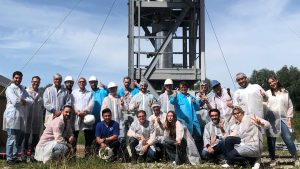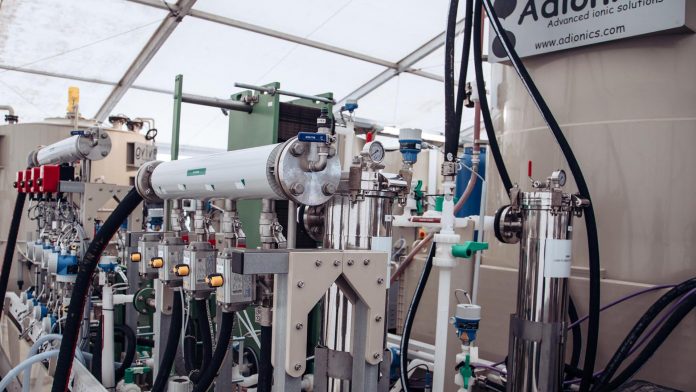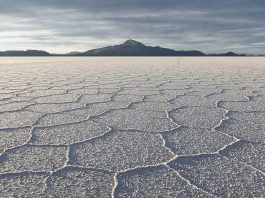As the company celebrates its tenth year of operation, ADIONICS’ CEO, Gabriel Toffani, explains how the company is well-placed to deliver high-quality lithium for the growing market with its Direct Lithium Extraction technology.
Private French company ADIONICS celebrates its tenth anniversary of innovation this year. Electric vehicles (EVs) are the future, and the global lithium market is booming. To meet the fast-growing demand for lithium production, ADIONICS has developed a unique solution for Direct Lithium Extraction (DLE) from brine. Speaking to The Innovation Platform, ADIONICS’ CEO, Gabriel Toffani, explained how the company is set to meet the demand for high-quality lithium and support the electric vehicle market.
Can you tell us more about the background behind ADIONICS, your Direct Lithium Extraction technology offering, and your main goals?
The technology developed by ADIONICS is based on the implementation of a patented process of selective extraction of salts. It uses liquid-liquid extraction technologies (absorption/desorption process of ionic species from brine) to produce a purified lithium chloride concentrated brine. Our objective is to bring to market an efficient (+90% yield), sustainable (low water and energy needs, no chemical pollution) and cost-competitive (OpEx/CapEx) alternative for battery-grade lithium production from brines. ADIONICS has an actual groundbreaking solution in a booming market, whilst at the same time being part of the movement to decarbonise the industry and to the energy transition.
What are your key priorities currently?
As we ambition to become a world leader in Direct Lithium Extraction from brine, the reliability of our technology is a top priority. That is why we have now three industrial demo plants – two of them in South America – to show in real conditions the performance of our disruptive technology. We maintain our R&D and innovation efforts to pursue our goals of continuous improvements in sustainability and quality of our process. A team is now dedicated to adapting our technology to contribute to the coming necessity of recycling lithium from used lithium batteries. Indeed, a first wave of need will come soon (2023-2024) with the increasing number of gigafactories in Europe and the US and a second wave for the end of life of first EVs (around 2030).
As stated earlier this year, 2022 was set to be the preindustrial year for ADIONICS. Can you elaborate on this, and the progress made with your preindustrial pilot plant?
2022 is a significant year as we reached the key milestone: our preindustrial plant Clean Lithium 250 for now in Calais (north of France). The Clean Lithium 250 (CL250) has a capacity of production of 250 tons of purified and concentrated lithium chloride brine. The commissioning and first tests have been successfully performed from April until June of this year with clients’ brines from Latin America (see press release concerning the test performed with Eramet’s Argentinian brine).
ADIONICS’ technology can extract a quality of lithium with a remarkably high extraction yield and an unequalled purity. The preindustrial pilot plant is a success. It will be soon shipped and installed in Latin America in the Andes where salars are. In situ long runs will be performed, aiming at demonstrating high yield, high purity lithium chloride production, stability, and operability of our DLE in real conditions (24/24h, in high altitude between 2500m up to 4000m). CL250 long runs aim at providing the elements for performing a definitive feasibility study (DFS) and to be ready for upscaling our technology to industrial scale (between 20 000 to 25 000 t LCE/y).
What has the rest of 2022 looked like for ADIONICS? How have you progressed closer to commercialising your Direct Lithium Extraction technology?
ADIONICS is among the best of Direct Lithium Extraction technologies, and we are ready to commercialise. Two new pilot plants have been built and commissioned this summer. These two new Clean Lithium 15 (CL15) have a capacity of production of 15 tons of lithium chloride per year. The purpose of these pilots is to demonstrate the capacity to deliver battery grade from a broad range of brines from 250mg Li/L up to +40g Li/L. CL15 piloting aims at providing the elements for performing a pre-feasibility study (PFS). The CL15 is easy to transport. The first CL15 is to be deployed in Latin America on clients’ salars. The second CL15 is installed in Europe to perform piloting, for our clients, a complete process from raw brine to purified and concentrated LiCl brine (ADIONICS DLE output) and then to battery-grade final product (lithium carbonate or lithium hydroxide).

ADIONICS advanced significantly on testing various brines in its laboratories and pre-industrial plant (250 tons Li capacity) in France and will be soon moving forward with tests in Europe and Latin America with various stakeholders.
Our Direct Lithium Extraction is a great level to reduce the environmental footprint, does not consume reagents, and has the highest lithium recovery rates. We have already assessed our disruptive technology on a large variety of brines, and we are ready to be rapidly deployed at a global scale.
Are there any other subjects you would like to mention in the recent development of ADIONICS?
I have two main points to add.
Firstly, all that we are achieving is only possible because we have a great team supported by our Board. We have significantly increased our team in the last month and new colleagues will join the company in the next months. I would like to thank all of them for the great effort and performance.
In addition, to support the green mobility growth, we are launching a fundraising that will allow us to accelerate our development and contribute to increasing green lithium production in the coming years.
Please note, this article will also appear in the twelfth edition of our quarterly publication.








